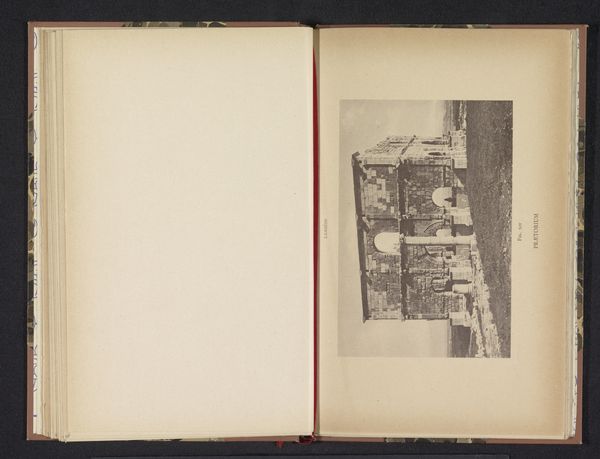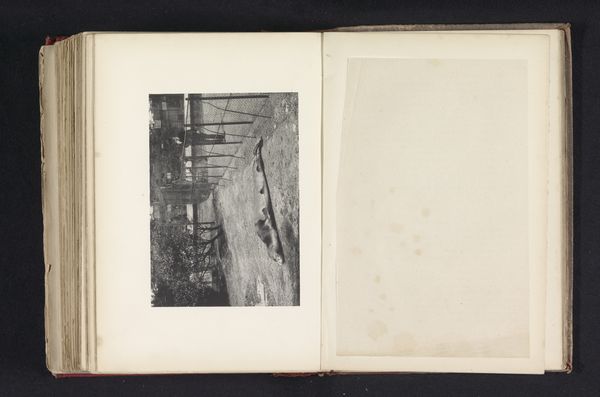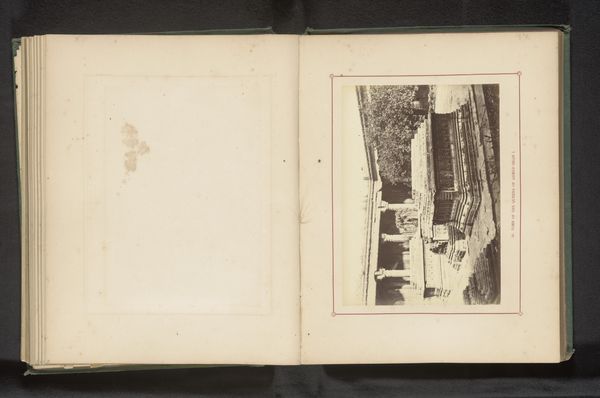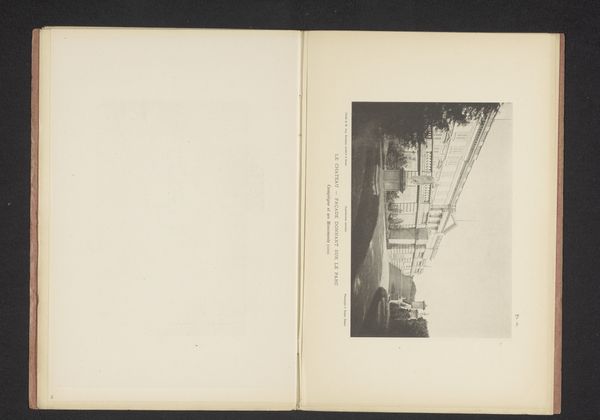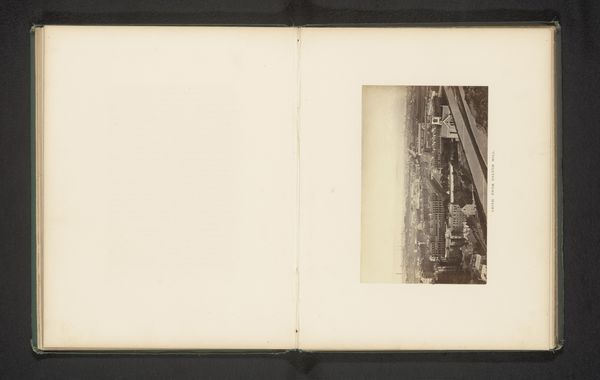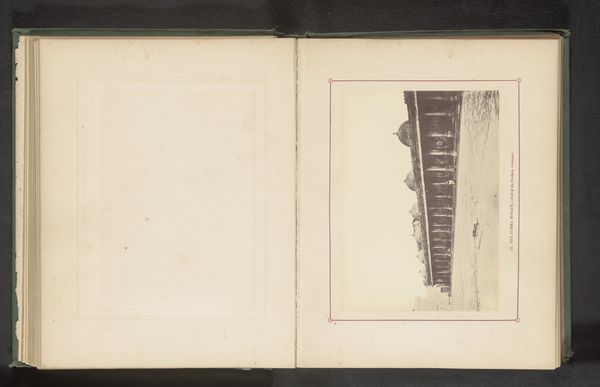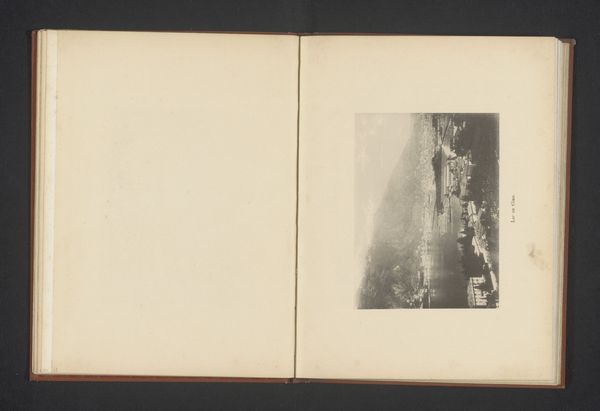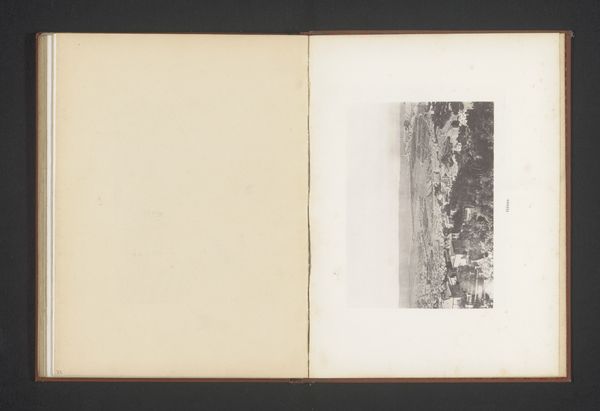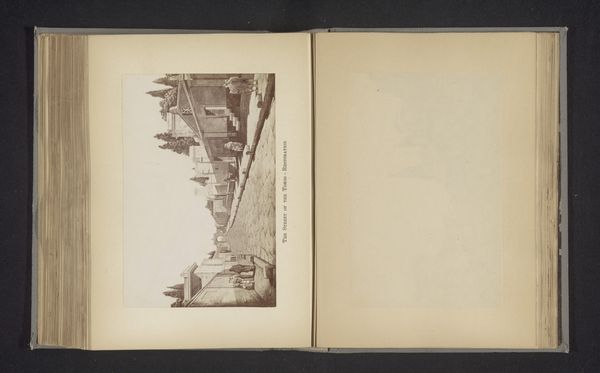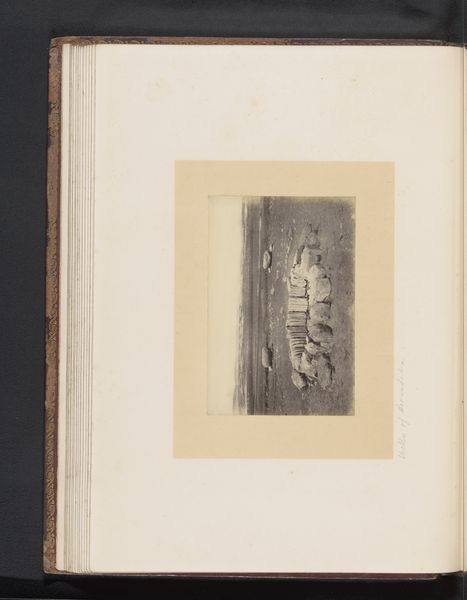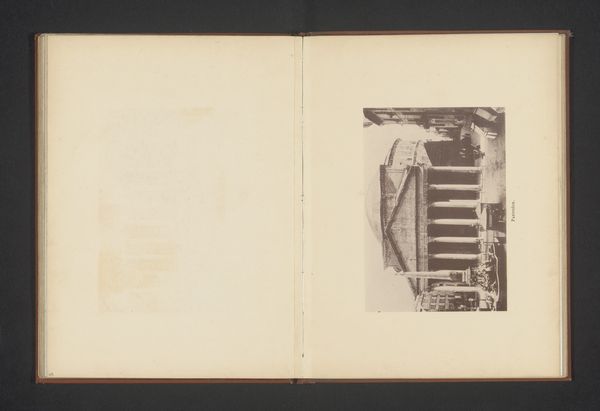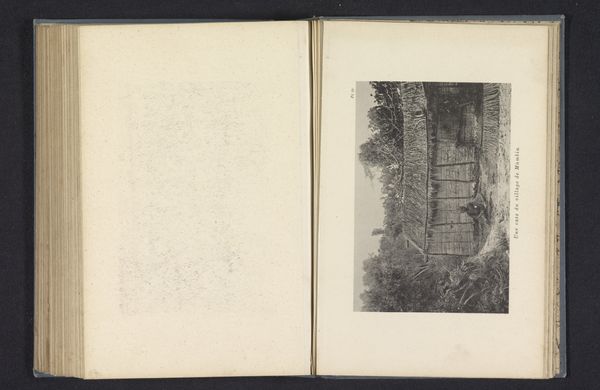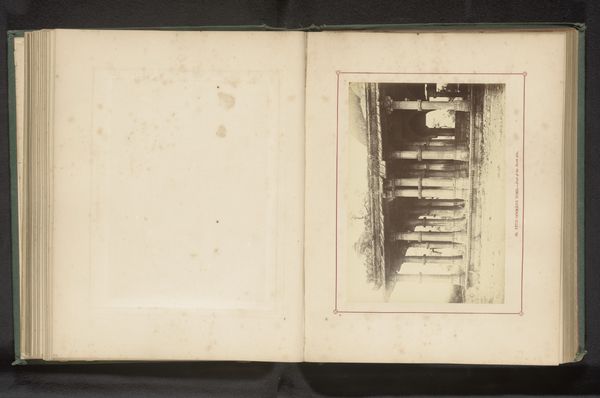
print, photography
# print
#
photography
#
geometric
#
cityscape
#
monochrome
Dimensions: height 191 mm, width 265 mm
Copyright: Rijks Museum: Open Domain
Curator: This monochrome print, taken before 1886, depicts a view of the Marché l'Ave Maria in Paris by Paul Dujardin. Editor: Immediately, I'm struck by the geometry of the scene. The crisscrossing metalwork and the repeated arches create a sense of depth and industrial power. Curator: Indeed. This photograph not only documents the cityscape but also provides insight into the modern construction methods emerging in late 19th-century Paris, particularly the use of iron and glass in market architecture. These spaces served as crucial sites for commerce and social exchange, reflecting Paris’s burgeoning economy. Editor: The materials really tell the story, don't they? It’s about the transition from traditional construction to mass-produced elements. Think about the labour involved in forging all that iron, the impact on Parisian industry, and how these marketplaces redefined the shopping experience for the common citizen. Curator: Absolutely, the material choices reflect a deliberate intent to modernize Parisian life. Structures like these were grand displays of civic progress, subtly reinforcing the government's vision of a technologically advanced society ready to meet the challenges of the new century. And don't forget Dujardin's position in visually documenting the ambition of that period. Editor: I see it more as a democratisation of access. Suddenly, light and air flooded public spaces thanks to the new availability and scale of glass and iron production. It changed the entire feel of daily commerce for both buyers and sellers. The material shapes their exchanges. Curator: A fascinating point. Perhaps both: a reflection of societal ambitions as well as everyday shifts in material consumption and labor practices. The act of mass production creates access, but also dictates to labor. Editor: So, in a way, Dujardin's image is a testament to how shifts in material availability and processes transform not just skylines but daily interactions, shaping culture one transaction at a time. Curator: I’d say it offers a valuable lens through which to examine the social and cultural impact of rapid industrialisation during a pivotal period in Parisian history. It speaks volumes about civic progress and, as you so eloquently point out, about the shifts in the human experience itself.
Comments
No comments
Be the first to comment and join the conversation on the ultimate creative platform.
